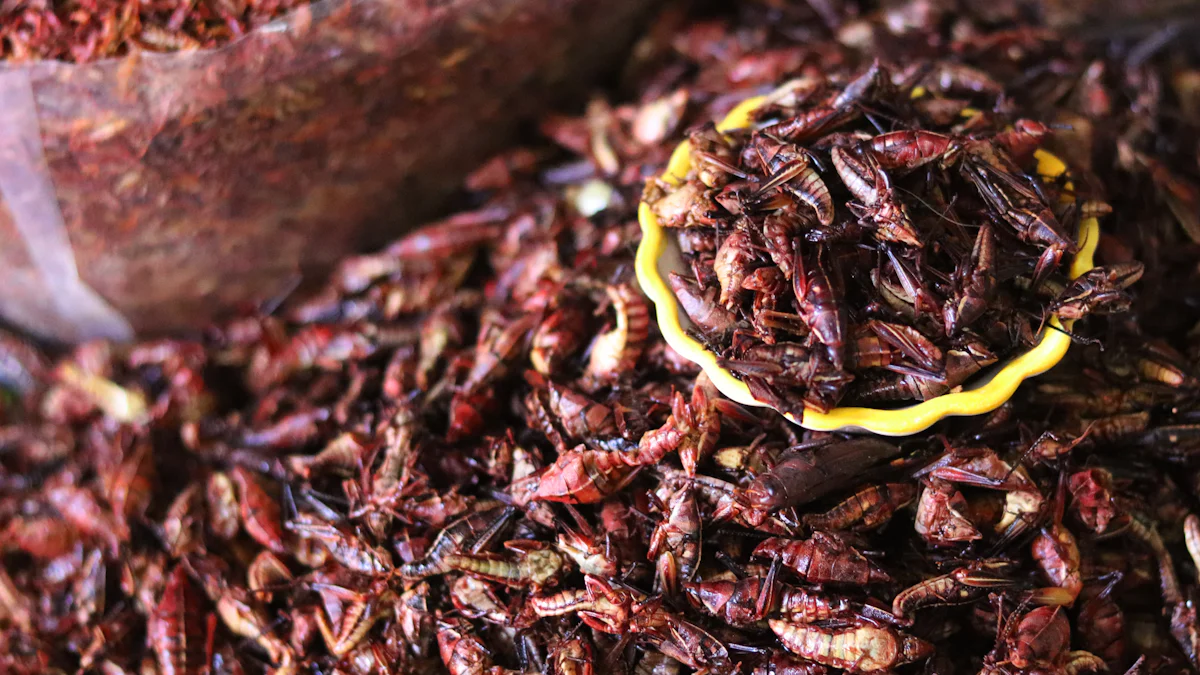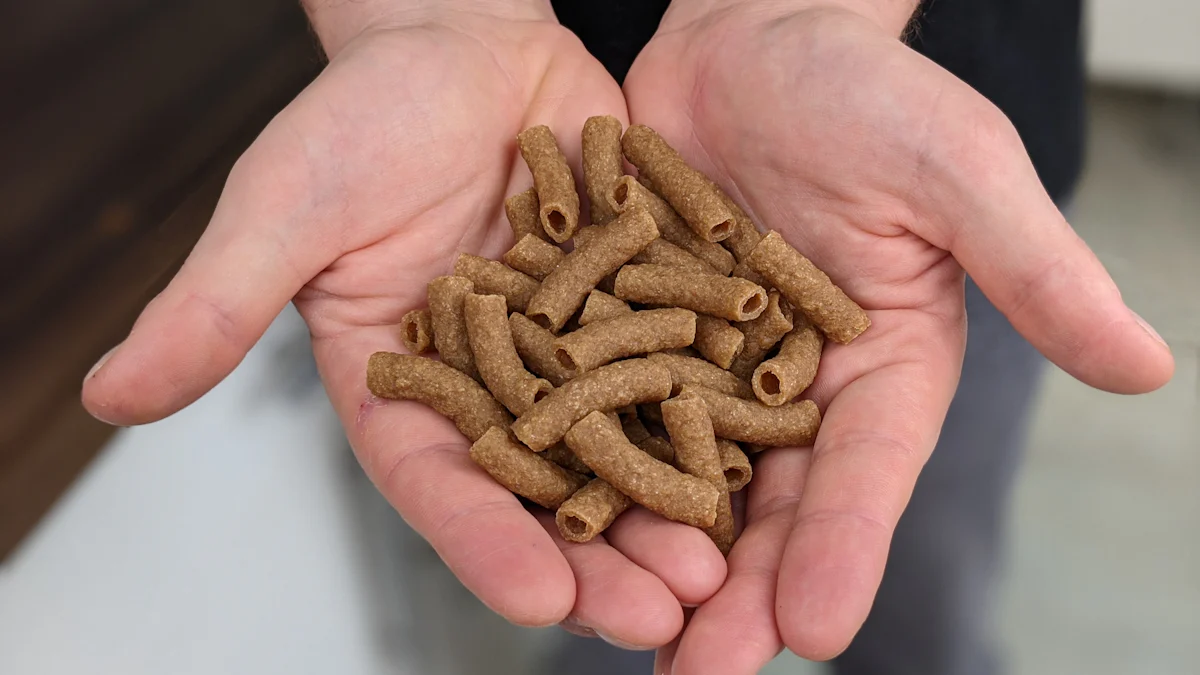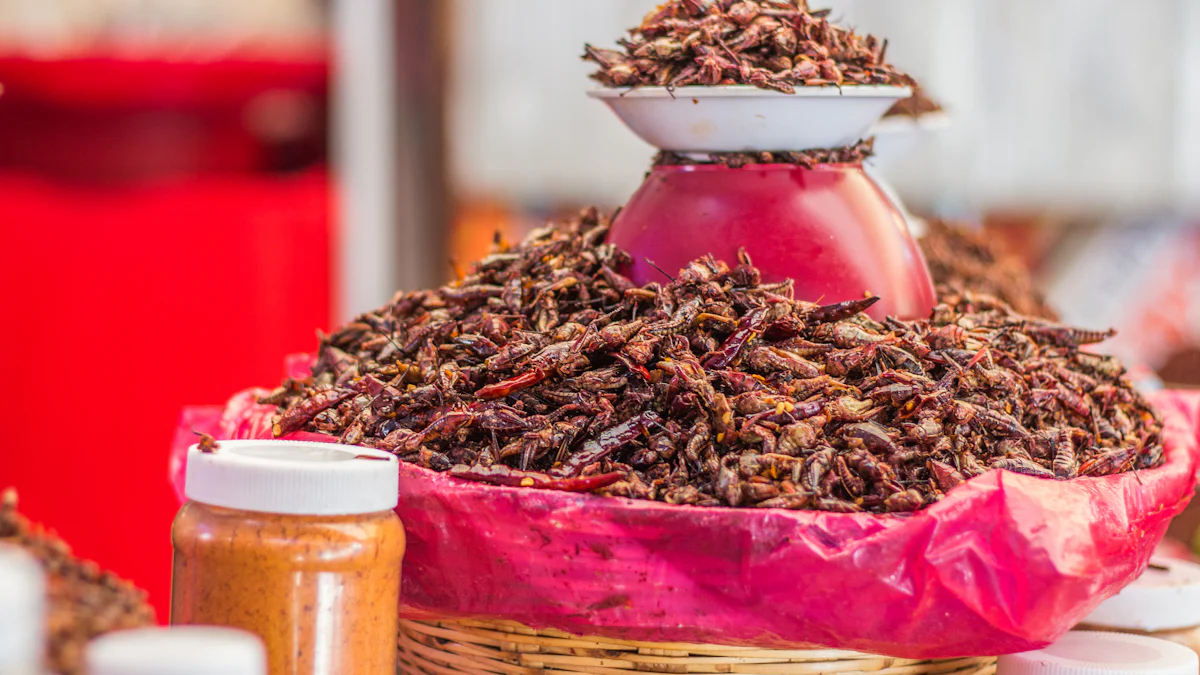
Protein plays a vital role in building tissues, repairing cells, and supporting immunity. Finding efficient protein sources is crucial for health and industries like animal feed. Mealworms offer a nutrient-packed solution. They’re rich in protein, eco-friendly, and versatile. From roasted snacks to mealworm protein powder, they’re a sustainable choice for humans and pets alike.
Key Takeaways
- Mealworms are a nutrient-dense protein source, containing 47.9% to 53.4% protein, comparable to traditional sources like soy and fish, making them a versatile option for both humans and animals.
- Incorporating mealworms into your diet can be easy and enjoyable; they come in various forms such as whole, roasted, or as protein powder, allowing for creative culinary uses in smoothies, baked goods, and more.
- Choosing mealworms supports sustainability; they require significantly less land and water than traditional livestock, producing far fewer greenhouse gases, making them an eco-friendly protein alternative.
Nutritional Profile of Mealworms

Mealworms are packed with nutrients, especially protein. This nutritious delicacy is fit for both pet and human consumption. You can enjoy it in various forms, including fried, roasted, and even live! What better way to spice up your diet than to include mealworms?
Protein Content and Amino Acid Profile
Mealworms are a powerhouse of protein. On a dry matter basis, their protein content ranges from 47.9% to 53.4%. The exact amount depends on their diet. For example, mealworms fed a wheat bran/flax cake diet reach the higher end of this range. What makes their protein even more impressive is the amino acid profile. It’s comparable to traditional protein sources like soy and fish. Studies show that mealworms can replace fish or soybean meal in animal feed without compromising growth performance. This versatility makes them a reliable protein source for both humans and animals.
Other Nutrients in Mealworms
Mealworms don’t stop at protein. They’re loaded with essential vitamins and minerals. These include iron, zinc, magnesium, potassium, and phosphorus. They also contain vitamins like B12, B3, and E. Dried mealworms, in particular, have higher levels of potassium, calcium, and magnesium compared to many traditional animal products. On top of that, their fat profile is balanced, with a mix of saturated and unsaturated fats. They’re rich in omega-3 and omega-6 fatty acids, which are great for heart health. With a fat content of 25% to 35%, mealworms also provide a solid energy boost.
Forms of Mealworm Protein, Including Mealworm Protein Powder
Mealworms come in many forms, making them easy to incorporate into diets. Whole mealworms are available for direct consumption or further processing. Mealworm powder is a popular option for those who prefer a less visible alternative. It can be added to smoothies, baked goods, or even pasta. Mealworm flour, another form, works as a protein-rich substitute in recipes. For convenience, there are also mealworm-based products like protein bars, crackers, and energy balls. These options make mealworm protein powder and other forms accessible for anyone looking to try this sustainable protein source.
Benefits of Mealworms as a Protein Source

Sustainability and Environmental Impact
Mealworms are a game-changer for sustainable protein production. Unlike traditional livestock, they produce far fewer greenhouse gases. For example, beef cattle emit around 2850 grams of greenhouse gases per kilogram of weight gain, while mealworms emit only 2 to 122 grams. That’s a massive difference! They also require significantly less land and water.
- Mealworms have a water footprint of 4341 m³ per ton, which is 3.5 times less than beef.
- Their land usage is minimal, with only 0.43 kg of land needed per kilogram of protein, compared to 4.3 kg for beef.
These factors make mealworms an eco-friendly choice for addressing global food security challenges.
Digestibility and Bioavailability of Protein
Mealworm protein is not just abundant; it’s also highly digestible. Studies show that the crude protein digestibility of mealworms is 66.12%. Their protein digestibility-corrected amino acid score (PDCAAS) is 76%, which is close to the average for vegetables (73%) but lower than beef (92%) and soy (91%). However, mealworms shine in amino acid digestibility, with an apparent ileal digestibility (AID) of 89-90% for certain amino acids. This makes them a valuable protein source for humans and animals alike. Factors like diet and moisture content can further enhance their nutritional value.
Potential Health Benefits
Mealworms pack a punch when it comes to health benefits. They’re nutrient-dense, offering high-quality protein, healthy fats, and essential vitamins and minerals. They contain all nine essential amino acids, comparable to beef and chicken. Plus, they’re rich in B vitamins like B12 and minerals such as iron and zinc.
Research suggests mealworms may support weight management and heart health. In studies, mealworm protein slowed weight gain in obese mice and improved cholesterol levels by reducing LDL (bad cholesterol) and increasing HDL (good cholesterol). Their balanced fat profile, including omega-3 and omega-6 fatty acids, also promotes better metabolic health. With options like mealworm protein powder, incorporating these benefits into your diet has never been easier.
Potential Drawbacks or Concerns
Allergies and Safety Concerns
Mealworms, like other edible insects, can trigger allergic reactions in some individuals. People allergic to shellfish, such as shrimp or crab, may experience similar reactions to mealworms. This is because mealworms contain tropomyosin, a protein also found in shellfish. Proper labeling of mealworm-based products is essential to help consumers identify potential risks.
Safety regulations for mealworms vary across countries. In the European Union, dried mealworms have been approved for human consumption after rigorous safety evaluations. The European Food Safety Authority (EFSA) ensures that mealworms meet strict standards before they hit the market. However, in places like Mexico, the lack of regulations means edible insects are sold without consistent oversight. While mealworms are generally safe when handled and cooked properly, unregulated production could pose risks. Consumers should always source mealworms from reputable suppliers.
Taste and Texture
The taste and texture of mealworms can be a mixed bag. Some describe their flavor as mild and nutty, similar to almonds or pine nuts. Others find them bland compared to crickets, which have a more earthy, nutty taste. Preparation methods play a big role in their texture. Roasted mealworms are crispy and crunchy, while fried ones are light and airy. Sautéed mealworms become tender with a slight chew.
For those new to eating insects, the texture might feel unusual. Ground mealworms, often used in flour or protein powders, offer a smoother experience. They add a subtle earthiness to baked goods and smoothies. Cooking techniques like roasting or frying with spices can enhance their flavor, making them more appealing to first-time consumers.
Cultural Acceptance and Perception
Cultural attitudes toward eating mealworms vary widely. In countries like Mexico and China, where eating insects is part of the culinary tradition, mealworms face less resistance. However, in regions like the United States and Europe, the idea of eating insects can feel unfamiliar or even unappealing.
Acceptance often depends on how mealworms are presented. Processed forms, like protein powders or energy bars, tend to be more acceptable than whole insects. Positive first experiences with mealworm-based foods can also encourage people to try them again. Marketing strategies that target younger demographics or emphasize sustainability can help shift perceptions. Over time, as more people recognize the environmental and nutritional benefits, mealworms may gain broader acceptance.
Mealworms stand out as a nutritionally rich and eco-friendly protein source. They offer high-quality protein, essential vitamins, and minerals, making them a valuable addition to any diet. Their versatility shines in forms like mealworm protein powder, which enhances baked goods, smoothies, and even pasta sauces.
Despite challenges like cultural acceptance and potential allergies, mealworms present a sustainable solution to global protein demands. Their minimal environmental footprint, including reduced water and land use, makes them a forward-thinking choice. As awareness grows, mealworms could become a staple for those seeking innovative and sustainable nutrition options.
FAQ
What does mealworm protein powder taste like?
It has a mild, nutty flavor. Some compare it to almonds or sunflower seeds. Its subtle taste blends well in smoothies, baked goods, or pasta sauces.
Is mealworm protein powder safe for everyone?
Most people can consume it safely. However, individuals allergic to shellfish should avoid it due to similar proteins like tropomyosin.
How can I use mealworm protein powder in my diet?
Add it to smoothies, pancakes, or energy bars. It works as a protein boost in recipes without altering the flavor significantly.


